Top Signs Your Dog or Cat Is in Pain (Vet Advice)
![]()
Is Your Dog or Cat Really in Pain? Here’s What You Might Be Missing
Sometimes the signs are obvious—a limp, a stiff gait, or a reluctant jump. But often, pain in our pets is subtle, silent, and easy to overlook. Just like us, dogs and cats experience discomfort, inflammation, and stress, but they can’t tell us when something hurts. In this guide, I’m breaking down all the key signals to watch for—changes in movement, sleep patterns, appetite, and even personality. I’ll also share some of my favorite natural strategies to help your pets feel better and move more comfortably, without relying solely on prescription medications.

Understanding these pain signals is more than just improving comfort—it’s about helping your pets respond faster to underlying health issues, whether it’s arthritis, injury, or chronic inflammation. Once you recognize the signs, you can take action to improve their quality of life and give them the relief they need.
CLICK HERE TO SIGN-UP: Top Natural Anti-inflammatories and Pain Killers for Dogs and Cat
If you’re interested in natural pet health and wellness, you’re in the right place. Don’t forget to subscribe to Veterinary Secrets for more tips, and check out my free upcoming webinar on top natural anti-inflammatories and painkillers for dogs and cats—happening Tuesday, August 26th at 5:00 p.m. Pacific.
Introducing Dr. Jones’ Ultimate Cannabinoid Blend for Dogs and Cats
For natural, full-body support, I recommend my Ultimate Cannabinoid Blend, a full-spectrum, 100% organic hemp oil supplement designed specifically for dogs and cats. It works with your pet’s Endocannabinoid System to support joint health, ease inflammation, reduce anxiety, and improve overall wellness—without any psychoactive effects. Available in 300mg, 900mg, and 1800mg bottles, it’s easy to dose accurately with the included medicinal dropper.

Whether your pet is dealing with aches, stress, or digestive issues, this blend can be an incredible addition to their daily wellness routine. Because they deserve relief that’s safe, natural, and effective.

Stop Ignoring These Pain Signals in Your Dog or Cat
Is your dog or cat in pain? Pets don’t tell us when something hurts, and some signs are subtle, even easy to miss. Today, I’m going to walk you through the key signals that your pet might be in pain and share some of my top natural remedies to help them feel better.
Why Recognizing Pain Matters
Just like us, dogs and cats experience pain. The difference? They can’t tell you where it hurts. They can’t say, “My ear is throbbing” or “My paw hurts.” That’s why it’s crucial to recognize the signs and treat their pain promptly.
Treating pain isn’t just ethical—it also helps your pet recover faster from underlying health issues. If a pet’s pain is managed, their body can focus on healing the real problem, whether it’s kidney disease, a UTI, or arthritis.
1. Changes in Movement
Some of the clearest signs of pain are changes in how your pet moves:
-
Reluctance to jump or climb stairs – Older dogs and cats may hesitate before leaping onto sofas or tables. Tula, for example, now thinks twice before jumping up.
-
Limping or favoring a leg – A classic sign of discomfort, especially in dogs.
-
Difficulty rising after lying down – Some pets struggle on hardwood floors or slippery surfaces.
-
Hunched posture – Pets with neck, back, or abdominal pain may walk hunched or move gingerly.
If your pet is moving differently, it’s often a clear signal they’re experiencing discomfort.
2. Changes in Activity
Pain can make pets less active:
-
Reduced play or walks – Dogs may seem disinterested in activities they once loved.
-
Increased panting – Common in dogs as a sign of discomfort.
-
Excessive sleep – Cats in pain will often nap more than usual.
3. Behavioral and Personality Changes
Pain affects personality. You might notice:
-
Your dog seems less interactive or affectionate.
-
Your normally welcoming cat avoids you or shows less enthusiasm.
-
Some pets become irritable or even aggressive.
Think about how you feel when you’re in pain—you’re not yourself. It’s the same for our pets.
4. Changes in Appearance
Pain can show up physically:
-
Weight loss or gain – Often linked to decreased appetite or activity.
-
Decreased grooming – Cats may develop matted fur if grooming is painful.
-
Excessive licking or hot spots – Repeated licking over a joint or sore area is common.
-
Feline Grimace Scale – Pain in cats can be seen in facial expressions: ears back, whiskers stiff, squinted eyes, or a tense face.
Pupil size may also change, and some pets show increased salivation, bad breath, or vocalizing like whining, growling, howling, or hissing. Interestingly, some cats may even purr when in pain.
5. Changes in Bathroom Habits
Pain can affect bathroom routines:
-
Elderly dogs may struggle to get outside in time.
-
Cats may avoid the litter box or vocalize excessively while urinating or defecating.
These signs, combined with changes in behavior, movement, and appearance, usually indicate your pet is in pain.
Natural Remedies for Pain Relief
Once you recognize pain, the next step is treatment. Here are some natural approaches I often recommend:
Joint and Muscle Support
-
Glucosamine, Chondroitin, and MSM – Found in our Ultimate Canine and Ultimate Feline supplements.
Acute Pain Relief
-
Arnica (homeopathic) – Safe for all pets, effective for short-term use.
Anti-Inflammatory Support
-
Turmeric (95% curcumin) – Anti-inflammatory and pain-relieving. Dose: 250 mg per 50 lbs of body weight, once or twice daily.
Topical Relief
-
DMSO – Penetrates the skin to provide local joint relief. Apply 2–4 times daily to affected areas.
Cannabinoids for Pets
-
CBD & Full-Spectrum Cannabinoids – Safe for acute and long-term use:
-
Standard dose: 3 mg per 10 lbs of body weight.
-
Acute pain: double the dose up to twice daily.
-
Long-term: 10 mg per 10 lbs daily (1 drop per 10 lbs).
-
Recognize, Treat, and Improve Quality of Life
The key takeaway: pets can’t tell us when they’re in pain, but we can recognize the signs. Early recognition and appropriate treatment allow them to heal faster, move more comfortably, and live happier lives.
CLICK HERE TO SIGN-UP: Top Natural Anti-inflammatories and Pain Killers for Dogs and Cat
Don’t forget about my free webinar on top natural anti-inflammatories and painkillers for dogs and cats—covering NSAID alternatives, toxicity signs, and chronic inflammation management. It’s happening Tuesday, August 26th at 5:00 p.m. Pacific.
CLICK TO GET A FREE COPY OF MY E-BOOK!

Introducing Dr. Jones’ Ultimate Cannabinoid Blend for Dogs and Cats
For natural, full-body support, I recommend my Ultimate Cannabinoid Blend, a full-spectrum, 100% organic hemp oil supplement designed specifically for dogs and cats. It works with your pet’s Endocannabinoid System to support joint health, ease inflammation, reduce anxiety, and improve overall wellness—without any psychoactive effects. Available in 300mg, 900mg, and 1800mg bottles, it’s easy to dose accurately with the included medicinal dropper.
Whether your pet is dealing with aches, stress, or digestive issues, this blend can be an incredible addition to their daily wellness routine. Because they deserve relief that’s safe, natural, and effective.




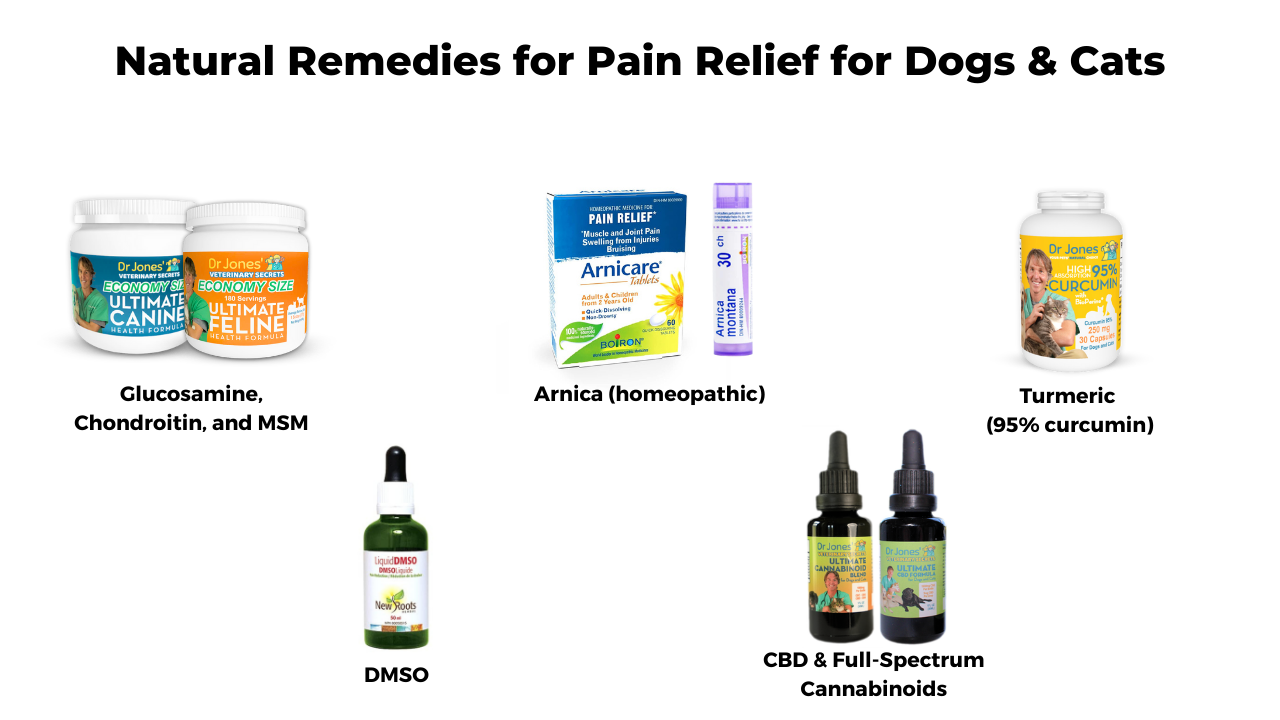
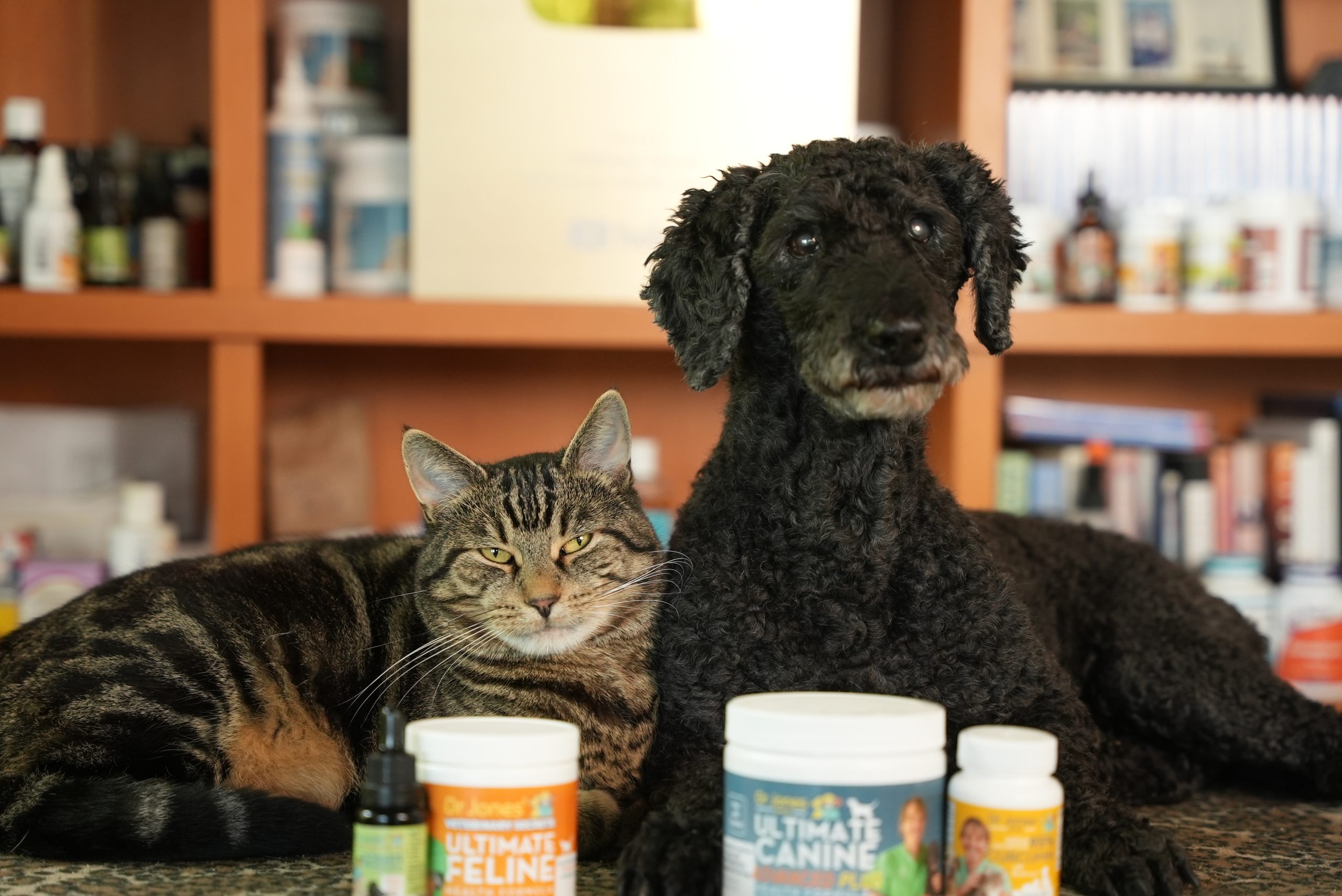

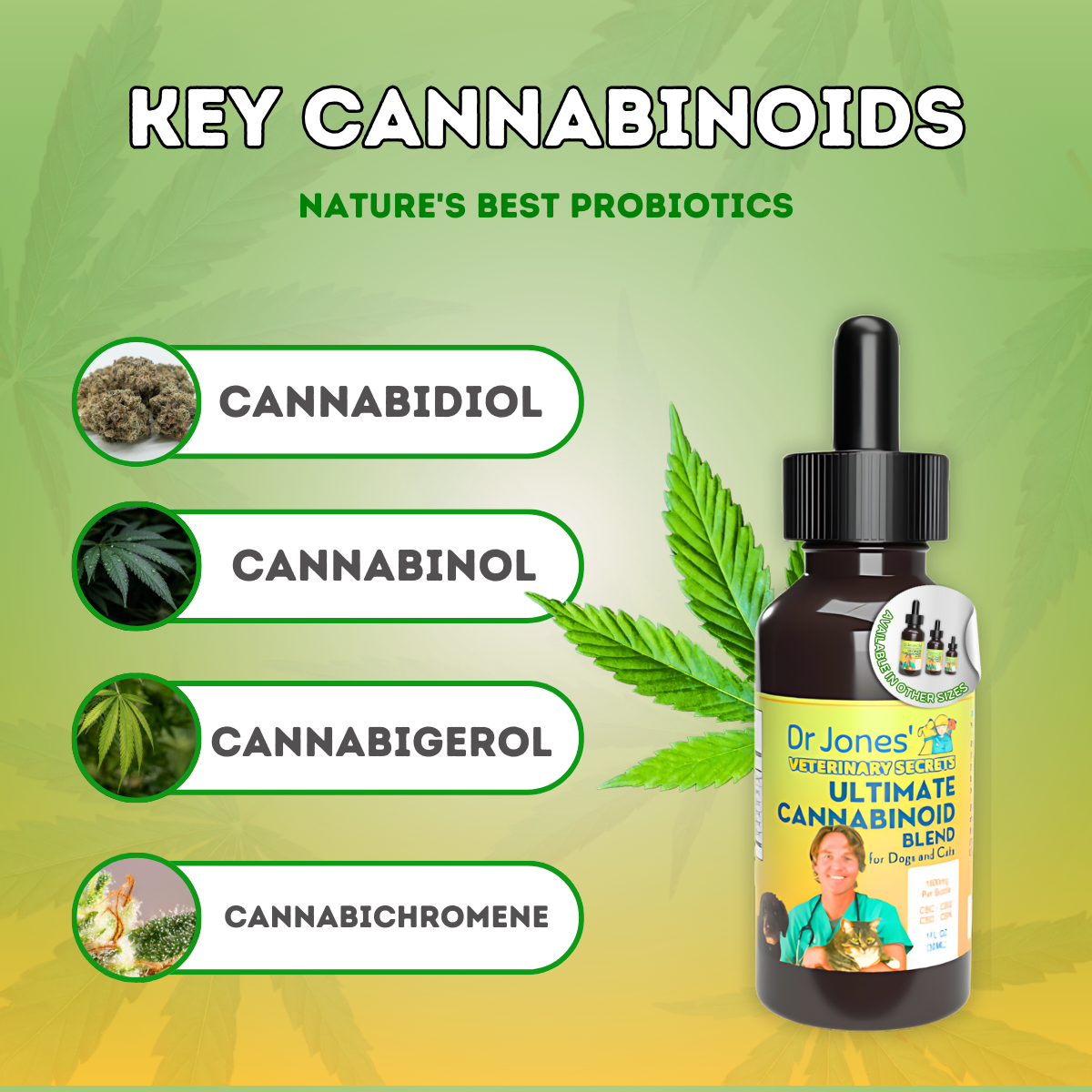
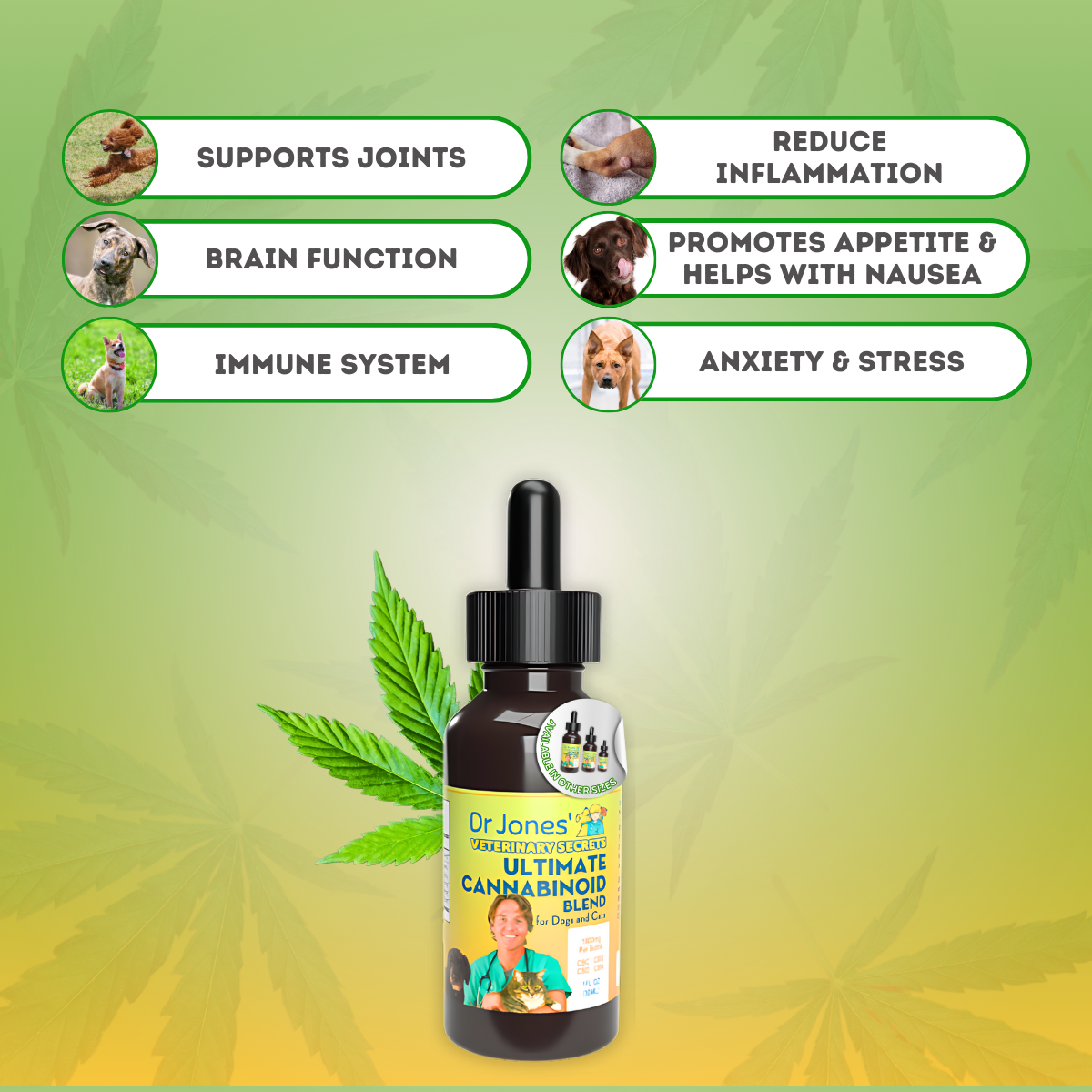



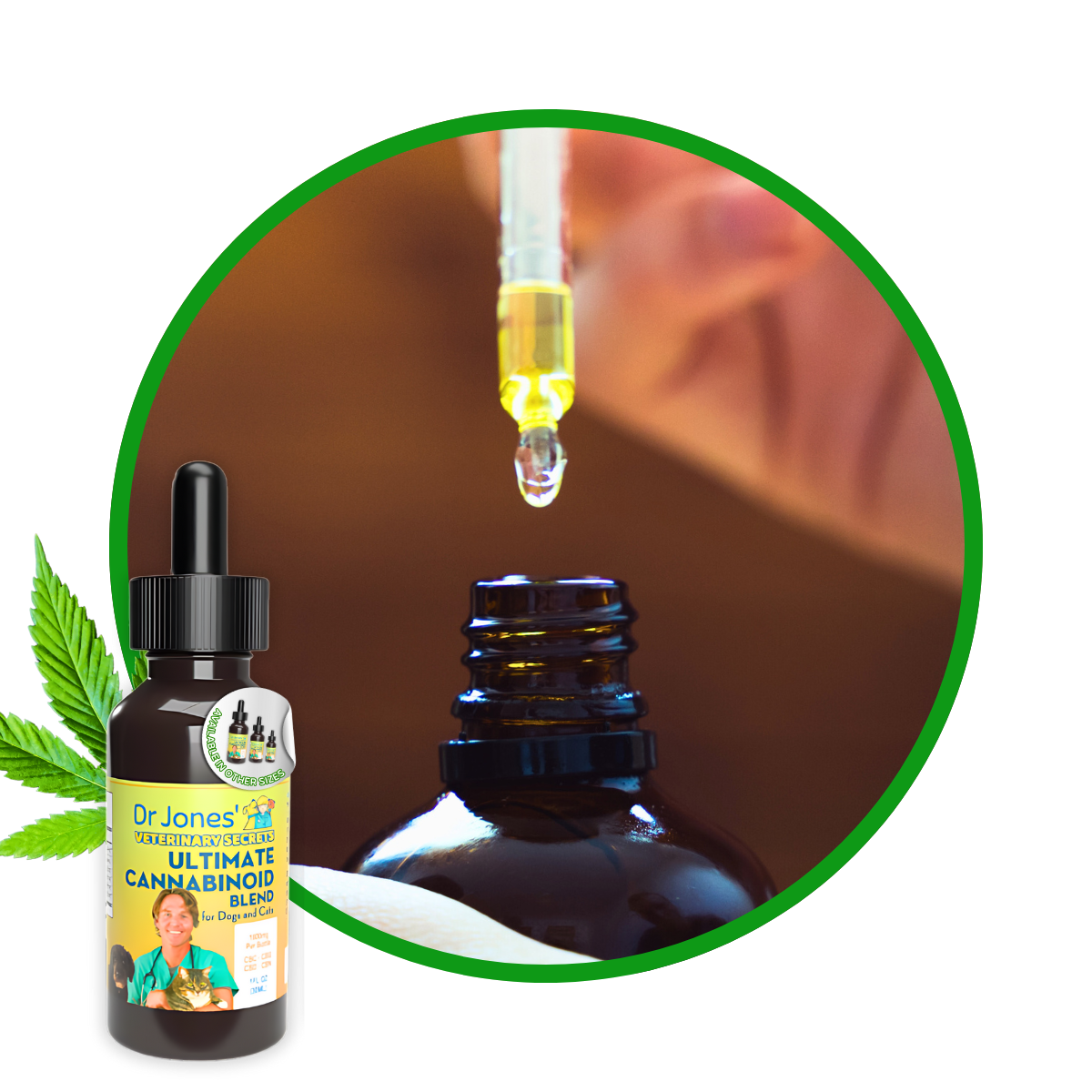
I think you’re awesome and will be blessed many times over by the maker my dad said animals were angels and if that’s the fact which I’m pretty well thinking is you have a hell of a blessing coming and are greatly appreciated, thank you so much.